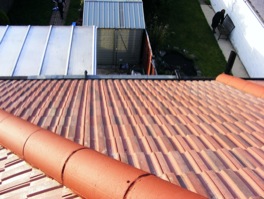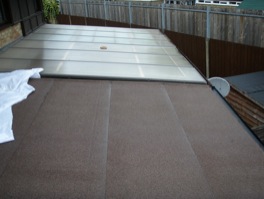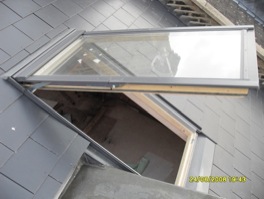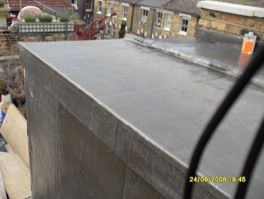
Tile Roofing

Similarly to roof tiling, tiling has been used to provide a protective weather envelope to the sides of timber frame buildings. These are hung on laths nailed to wall timbers, with tiles specially moulded to cover corners and jambs. Often these tiles are shaped at the exposed end to give a decorative effect. Another form of this is the so-called Mathematical tile, which was hung on laths, nailed and then grouted. This form of tiling gives an imitation of brickwork and was developed to give the appearance of brick, but avoided the Brick Taxes of the 18th century.
Felt Roofing

Felt is made by a process called wet felting, where the natural wool fibre is stimulated by friction and lubricated by moisture (usually soapy water), and the fibres move at a 90 degree angle towards the friction source and then away again, in effect making little "tacking" stitches. Only 5% of the fibres are active at any one moment, but the process is continual, and so different 'sets' of fibres become activated and then deactivated in the continual process
Slate Roofing

Slate is particularly suitable as a roofing material as it has an extremely low water absorption index of less than 0.4%. Its low tendency to absorb water also makes it very resistant to frost damage and breakage due to freezing.
Roof Windows

Top brands roof windows are increasingly used in modern buildings and new houses.
As well as a choice of quality, standard sized windows available in offer a wide variety of non-standard sizes and shapes designed to satisfy your unique individual requirements.
Lead Works

The decision on whether to repair or renew can be influenced by many factors. A parapet or central valley gutter lining may be in a fair condition and on its own, worth repairing to extend life by another ten to fifteen years. But if the adjacent slated or tiled areas are to be renewed, the relatively low cost of re-laying the lead gutters would be well worth accepting.
